6 Simple STEM Activities for Little Learners
Where do little kids shine? With boundless creativity and imagination! They can often see a castle where you only see five blocks, an airplane where you see two LEGO pieces stuck together at a right angle, a magical world where you see empty egg cartons and toilet paper tubes. At this age, STEM is all about exploration!
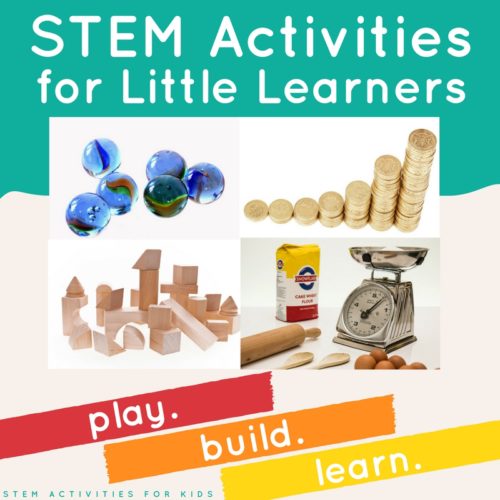
Explore STEM with measurement.
Try measuring favorite toys or the children themselves. Use both standard and nonstandard measurement. How many cm tall are you? How many coins long is the chair? Kids not into measurement? Try something unusual. How many pairs of underwear long is the rug? Kids love talking about underwear. Underwear is downright hilarious.
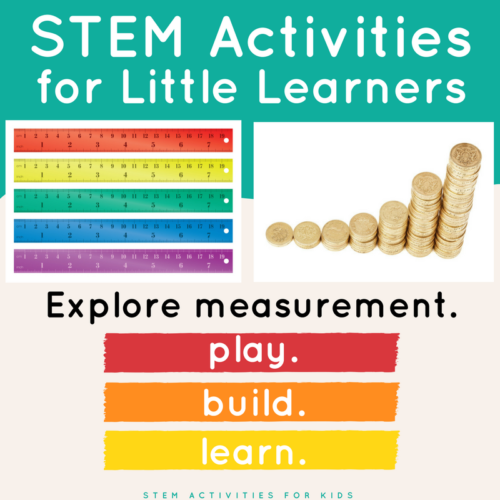
Questions to ask your little STEM learners once they stop laughing about the underwear:
Why is standard measurement useful?
Why are there different units of measure for things like length or distance and weight or mass?
When might it make mores sense to use a ruler? What about a flexible tape measure?
Measurement is a great way to get hands-on STEM exploration, particularly in the M (mathematics). Try measuring both large and small objects. Can you use the same scale to measure both? Why or why not?
Explore STEM with force and motion.
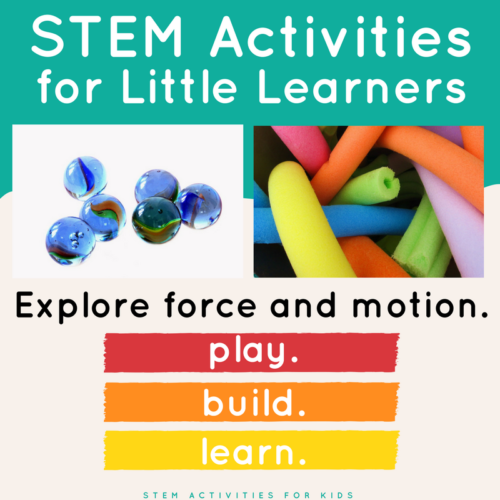
Try creating a marble run with pool noodles or toilet paper tubes, or design and build a car. This is something that little learners will do over and over, delighting every time when the marble reaches the bottom of the track. *Please be mindful of the choking hazard of marbles and other small objects. When in doubt, choose larger balls like ping pong balls, and use large paper tubes to create your track.
Questions to ask:
What happens if you have a steep curve?
Are there advantages or disadvantages to having the marble go down a tube (protected on all sides) or a chute (open on top)?
What happens if you put a bump in the track?
What will make the marble slow down or speed up?
Does the size or mass or the marble affect its speed?
Think about trying this fun momentum exploration or head to the playground for swinging science.
Explore STEM in nature with your little STEM learners.
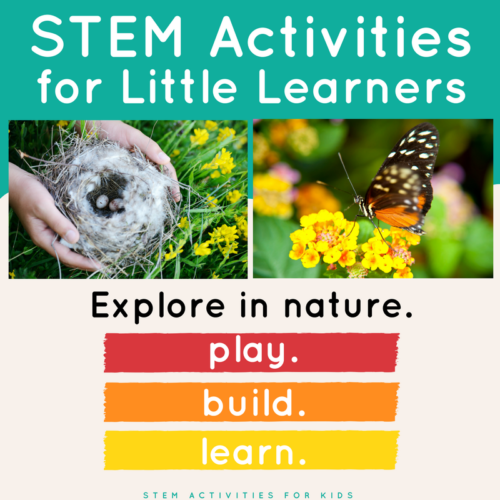
Try nature bingo, observing a butterfly life cycle, or create a bark and leaf rubbing journal.
Questions to ask:
What animal homes can you find and observe?
How can you use other senses to observe the nature around you?
What do you hear?
What do you think the animals are saying or communicating?
What animals do you see more or less of depending on the season or weather?
As a nature lover, this is one of my favorite ways to explore STEM with my own children. If you don’t like the great outdoors, seek out a nature center with programs for young ones, or find an indoor butterfly garden to explore. If you are feeling bold, try starting a garden with your kids. Growing from seed to food is enjoyable, and kids love to reap the rewards. One of my favorites to grow? Strawberries! Why? You can read my top 5 tips for growing them at home here. They tend to be pretty low maintenance, and although you have to share with the local wildlife, there is nothing quite like a fresh strawberry!
Explore STEM in the kitchen.
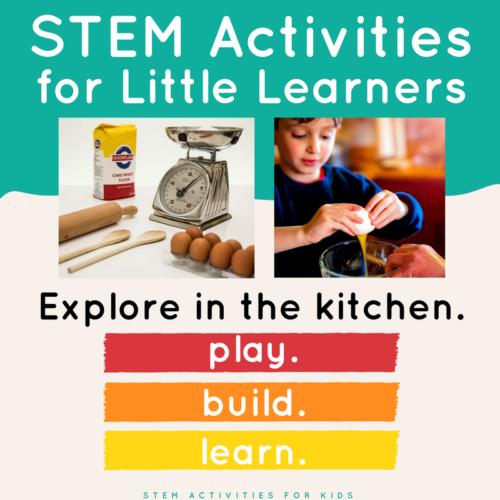
Not only is this one of the most versatile ways to get hands-on STEM exploration, it’s also the most delicious. Experiment with baking, and measure while you are at it. Next time you have berries, nuts, or grapes for a snack, why not count and weigh them on a kitchen scale?
If you are lucky and have a pasta maker, you may be able to show them the extrusion process! If you don’t have a pasta maker, you can purchase wagon wheel pasta and create a gear train.
Explore STEM with tools.
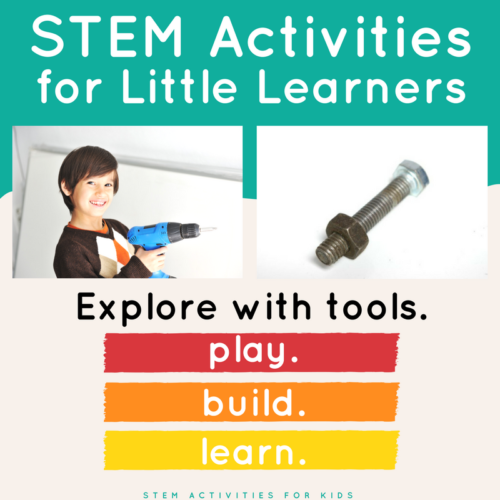
Remember to supervise closely when working with tools, but even young children can learn to properly work with tools such as wrenches, hammers, and screwdrivers. Do you have old appliances that don’t work? Take them apart together!
Questions to ask:
What do you think this part does?
How would we put this back together?
What might be broken?
Why do you think the design has this part here?
If you have a minor repair around your home or at school, try to involve your kids. It might take twice as long, but they won’t forget how they helped.
Explore STEM with building blocks.
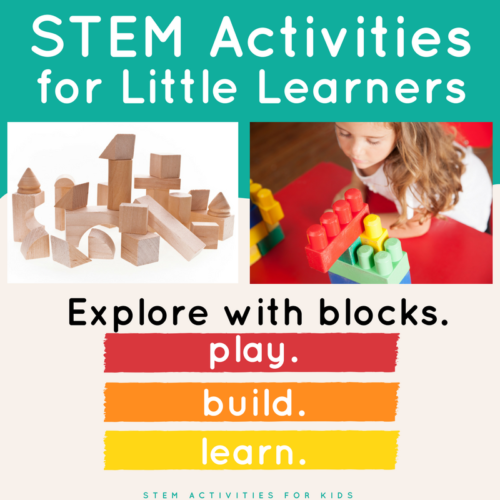
While kitchen STEM is the tastiest, building with blocks is by far my favorite STEM activity for little learners. Use wooden blocks that stack, plastic bricks that snap together, magnetic blocks, or any other blocks you have! KEVA planks and dominoes are also amazing. Find some challenges to do with those here. When my kids were young, I made them homemade tree blocks. These were some of my favorite, though they of course preferred the store-bought kind.
Look for deals on bulk building bricks, either from your local sources or online. I’ve gotten some great deals over the years at www.shopgoodwill.com. It’s similar to eBay but not as well known, so the auctions don’t tend to go up as high.
If you are looking for directed STEM activities with building bricks, I have created a series or STEM building challenges I hope you will check out.
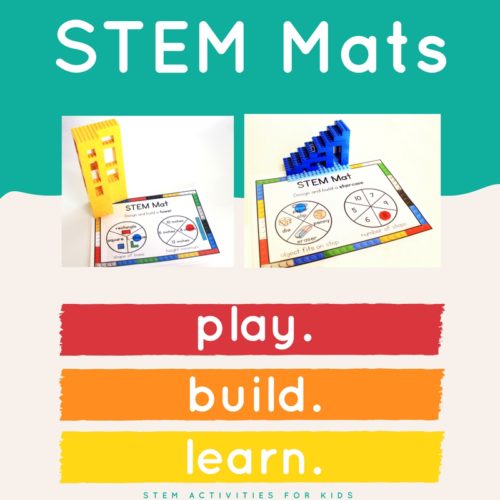
STEM Mats are easy to set up, yet they provide everything needed for a directed STEM exploration. Used alone, kids will have a task to complete with various criteria. Depending on the criteria they spin, the challenge might be different every time. How do they work?
STEM Mats Criteria
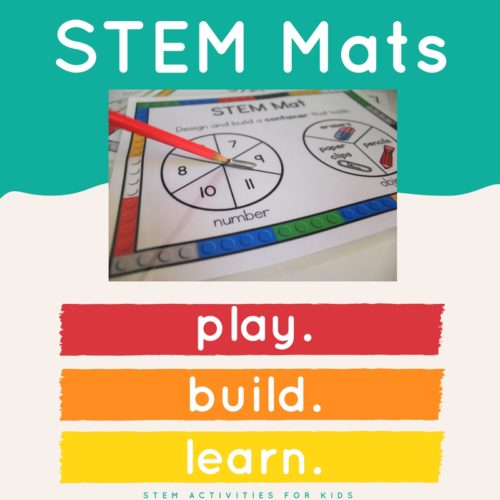
First, you need the mats and building bricks. Use a paper clip and pencil, and spin each of the spinners on the mats. The criteria is now set! The kids then choose the bricks they need and create their design. Then they test their design based on the criteria.
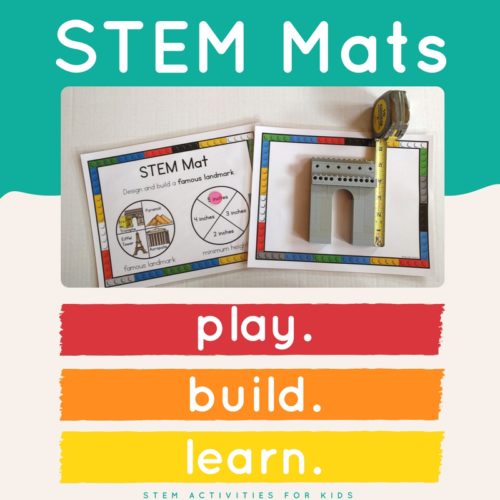
The mat above has world landmarks, which can be used to expose the kids to geography and culture. The mat below was created as a bridge to literacy. Building CVC words is more challenging than it seems at first! In the STEM Mats resource, I have included mats with both simple and difficult-to-build letters. Letters like H, I, and T are simple because they are formed with right angles. What about a G or an S? The kids have to work hard to create these letters! It’s always a surprise to them how challenging this one turns out to be!
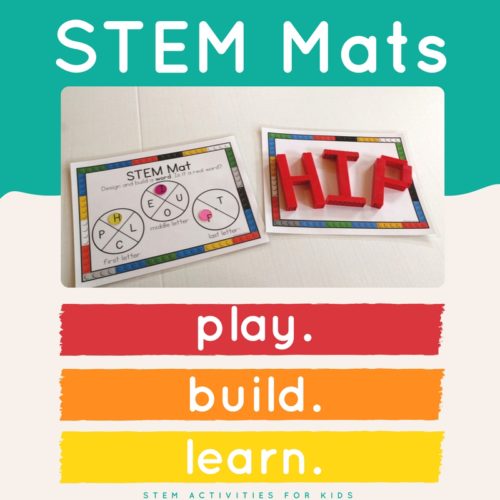
Math extension with STEM mats
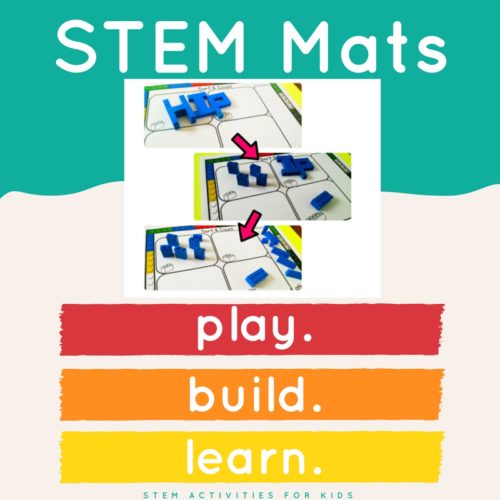
In addition to measuring the builds, I have included various mats to sort and graph the types of bricks used. As a bonus, this helps with clean up/disassembly, which can sometimes be a touchy subject for kids who don’t want to part with their creations.
Writing extension with STEM mats.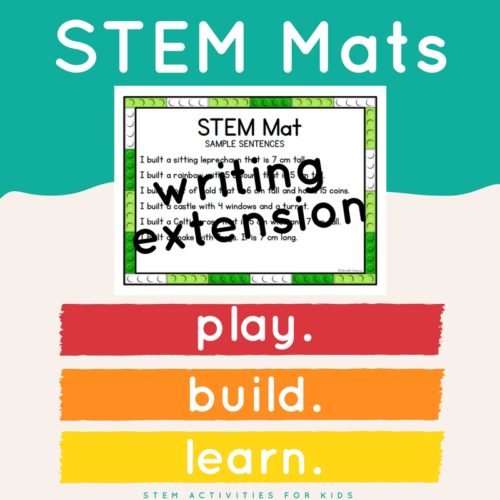
Once the task has been completed, students can then use the provided sentences to help craft their own. They can even keep these sentences as a STEM journal to track what they have completed throughout the school year. Alternately, they can color in the cards provided to track which projects they have completed and which they have yet to do.
STEM Mats for the Holidays
I have even created STEM Mats for use with a variety of holidays. Here is one from St. Patrick’s day:
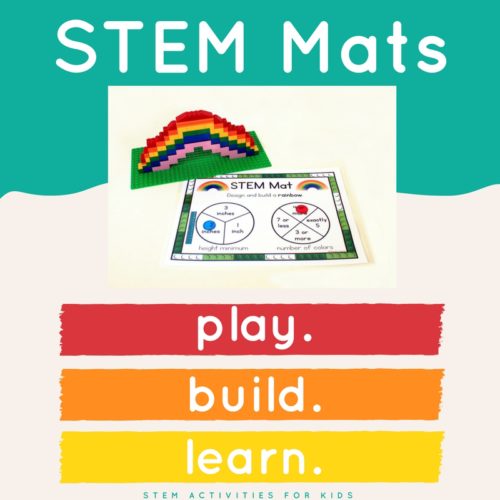
See more about STEM Mats in the video
I put together a video that explains more about the STEM Mats, if you are interested in learning even more about them.
Here are quick links to the listings for STEM Mats on Teachers pay Teachers:
Like the mats but not sure if you need them right now? Pin this idea for later:
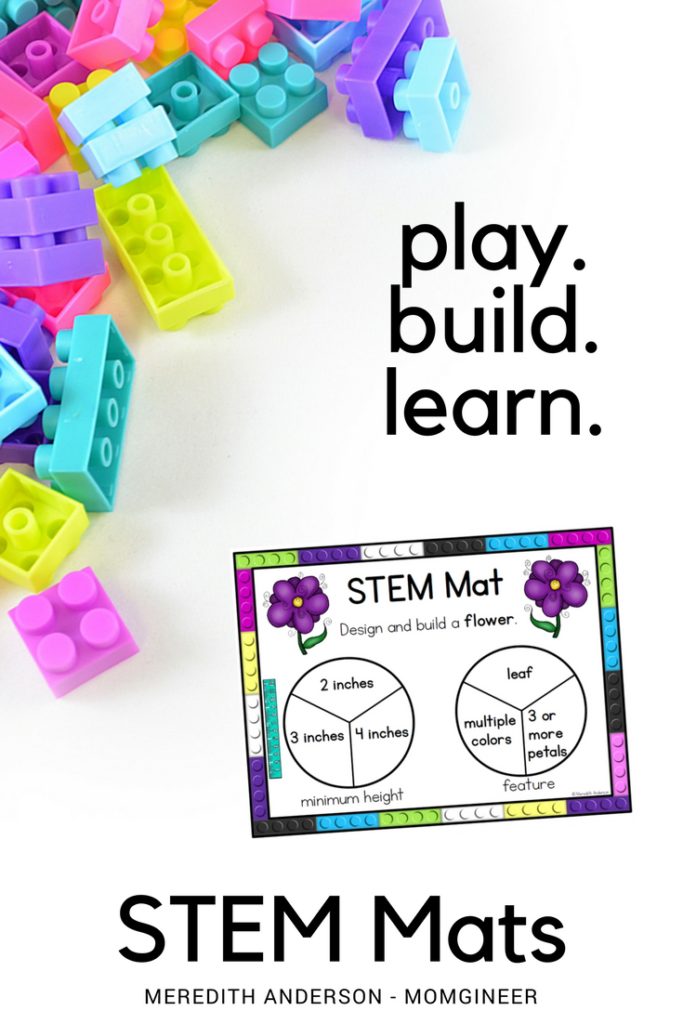
Drop us a line! What are YOUR favorite STEM activities for little learners? Do you have a budding marine biologist, electrical engineer, or IT specialist on your hands? Please feel free to share your experience in the comments. It’s not bragging, it’s stemtastic!

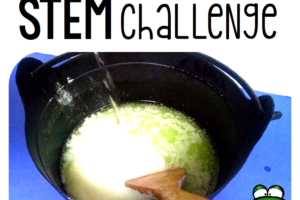


Leave a Reply
Your email is safe with us.